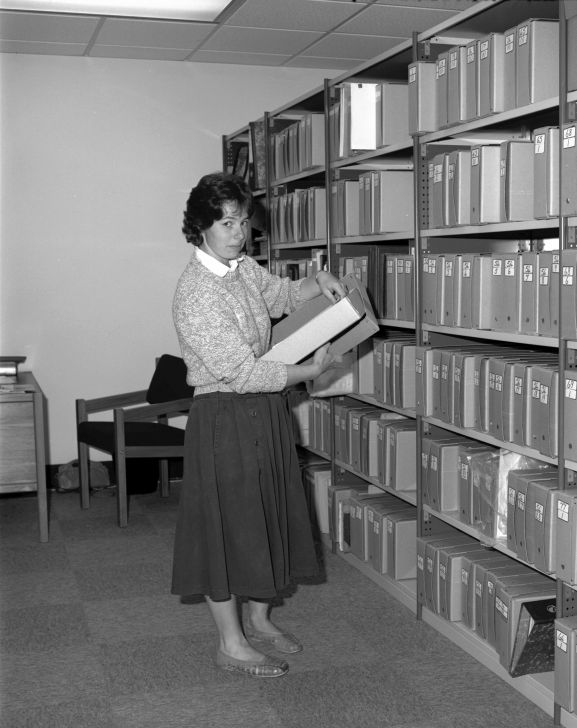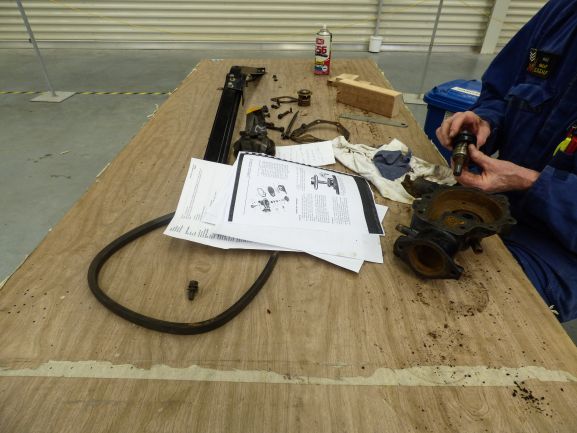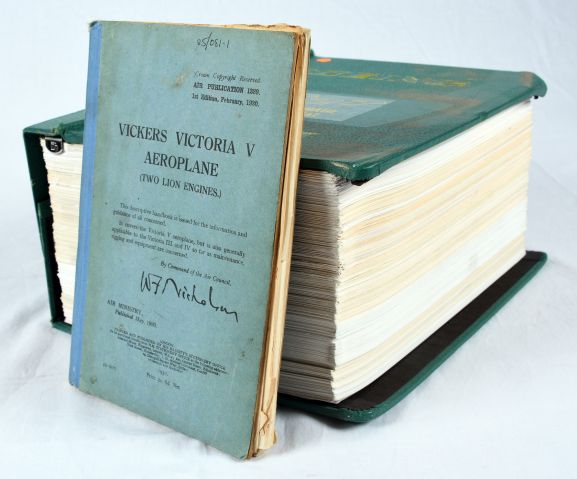Beginnings of the Air Force Museum Archive
When the Air Force Museum began collecting historical material in the late 1970s, to build up a research archive, there weren’t any museum professionals on staff and the members of the RNZAF who were given the job did an amazing job with little resources and little knowledge of archival standards.
In 1987, just after the Museum as we know it opened, a young twenty-something librarian was employed to curate the written archive. Thérèse Dowman, later Thérèse Angelo, began the almighty task of sorting and arranging the mass of papers and documents, as well as new material that was constantly being donated.

Originally, she worked with card indexes and ledgers and when computers were introduced transferred much of that information into spreadsheets. This hard and largely unrecognised work created the basis of what the Museum now uses for curating and cataloguing the written archive. With unrelenting hard work, she worked her way up to become Director of the Museum for more than ten years.
Finding aids
Finding aids in archives have changed dramatically in the last twenty years. Before computers, records were kept in books, ledgers or on index cards. With the advent of digital media and programmes like spread sheets and databases, everything changed. After the process of entering the information from the original source document into the database, words or terms, can be searched with results appearing almost instantly, vastly reducing the time involved in searching the collection. Nowadays, relational databases advance the concept by interconnecting a series of sub-databases to display search results.

Variety of media
When we imagine an archive, often we think of dusty old tomes lying on even dustier shelves. In modern times, nothing could be further from the truth. Yes, paper documents are the most common, but many other different media contain information and are being preserved.
At the Air Force Museum, the Written Archive, Research Library and Photographic Archive, among other sub-collections, are contained within the greater Research Collection. As part of this collection, information is recorded on an enormous variety of media; paper, magnetic audio tape, photographs in all its 20th century varieties, analogue sound recordings and born-digital media. With a small team of three, we all have a diverse range of skills and expertise to care for this collection and is a job that keeps us all extremely busy.

Present day use of Archives
Archives are there to be used and accessed and ours here at the Air Force Museum of New Zealand is no exception. They are used by staff to create content for social media, exhibitions and public programmes. Curators use them to research objects in the collection or enhance their knowledge of a topic and the Air Force also uses our archives to help with matters of an historical nature.
Public use of the archive is also important. Whether it is researching the squadron a that family member served with, or perhaps an Air Force base near their home, people access our archives through the reading room and research services for all sorts of reasons.
One great by-product of all this research is that our archival content and imagery has featured prominently in books, magazine articles and online content over many years, ranging from children’s books to official narratives. Here are just a few examples.

Using the archives in museum conservation work
Museum technical staff and volunteers use our technical publications and aircraft manuals to guide their conservation work. It’s a great advantage to have written records readily available when researching and preserving objects from the collection – especially our aircraft!

When you compare the size of a single volume, maintenance, rigging and equipment manual of a Vickers Victoria bi-plane (February 1930), shown in this photo, with Volume 13 of the Boeing 727 overhaul manual (circa the 1980s) behind it, you can see how tech publications have expanded over time to match the increasing complexity of modern aircraft.

The future of our Collection management system
As we move further into the digital age, our heritage institutions are adapting by designing new and improved ways of managing collections. Here is a glimpse at what the future of working in our archive will look like!

We’ve already got mobile devices and are now waiting to use Vernon CMS (Collection Management Software) on our new technology. This upgrade will enable staff to access and update collection records from anywhere in the Museum, not just from the office desktop!





